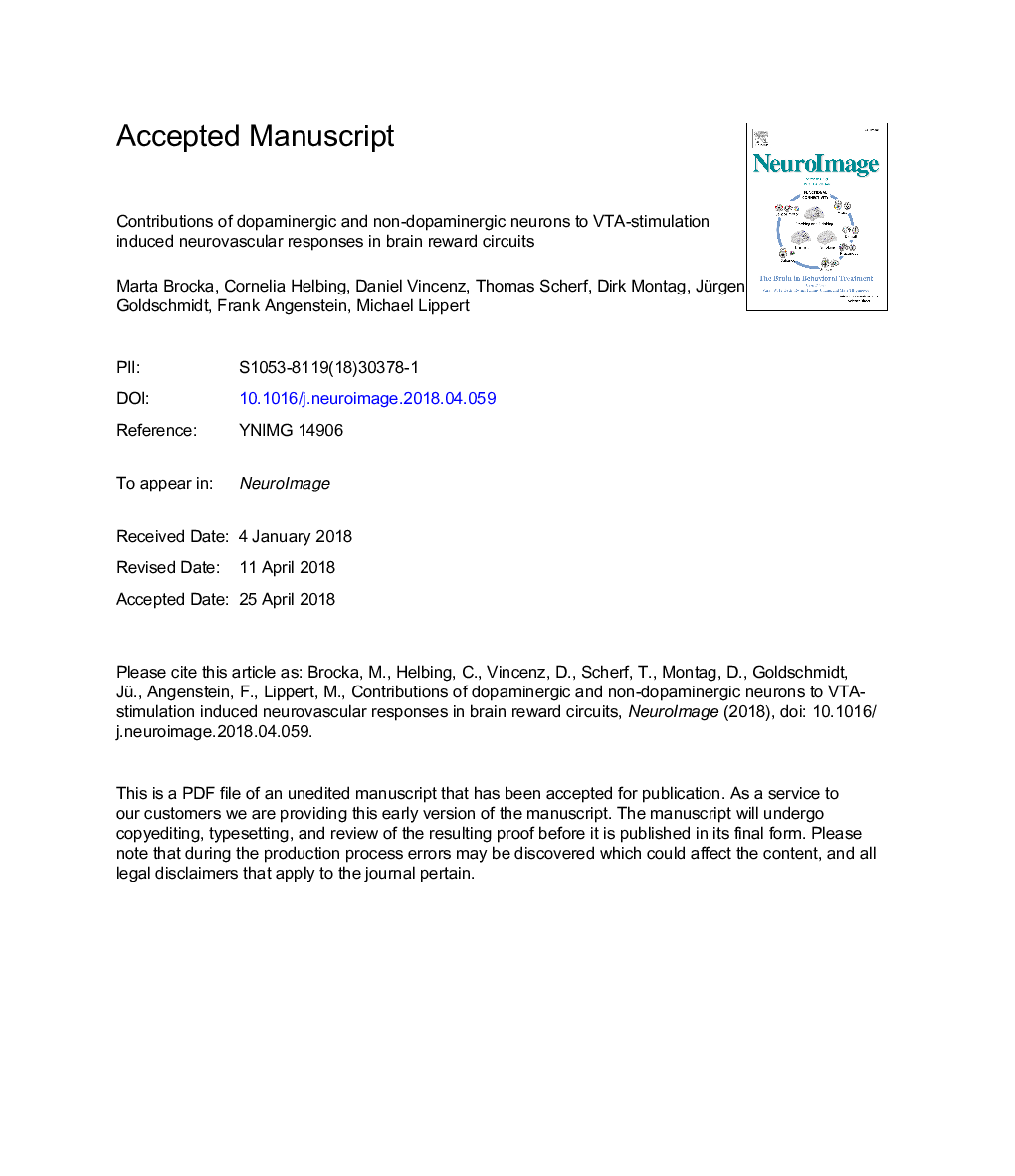| کد مقاله | کد نشریه | سال انتشار | مقاله انگلیسی | نسخه تمام متن |
|---|---|---|---|---|
| 8686805 | 1580833 | 2018 | 34 صفحه PDF | دانلود رایگان |
عنوان انگلیسی مقاله ISI
Contributions of dopaminergic and non-dopaminergic neurons to VTA-stimulation induced neurovascular responses in brain reward circuits
دانلود مقاله + سفارش ترجمه
دانلود مقاله ISI انگلیسی
رایگان برای ایرانیان
کلمات کلیدی
موضوعات مرتبط
علوم زیستی و بیوفناوری
علم عصب شناسی
علوم اعصاب شناختی
پیش نمایش صفحه اول مقاله

چکیده انگلیسی
Mapping the activity of the human mesolimbic dopamine system by BOLD-fMRI is a tempting approach to non-invasively study the action of the brain reward system during different experimental conditions. However, the contribution of dopamine release to the BOLD signal is disputed. To assign the actual contribution of dopaminergic and non-dopaminergic VTA neurons to the formation of BOLD responses in target regions of the mesolimbic system, we used two optogenetic approaches in rats. We either activated VTA dopaminergic neurons selectively, or dopaminergic and mainly glutamatergic projecting neurons together. We further used electrical stimulation to non-selectively activate neurons in the VTA. All three stimulation conditions effectively activated the mesolimbic dopaminergic system and triggered dopamine releases into the NAcc as measured by in vivo fast-scan cyclic voltammetry. Furthermore, both optogenetic stimulation paradigms led to indistinguishable self-stimulation behavior. In contrast to these similarities, however, the BOLD response pattern differed greatly between groups. In general, BOLD responses were weaker and sparser with increasing stimulation specificity for dopaminergic neurons. In addition, repetitive stimulation of the VTA caused a progressive decoupling of dopamine release and BOLD signal strength, and dopamine receptor antagonists were unable to block the BOLD signal elicited by VTA stimulation. To exclude that the sedation during fMRI is the cause of minimal mesolimbic BOLD in response to specific dopaminergic stimulation, we repeated our experiments using CBF SPECT in awake animals. Again, we found activations only for less-specific stimulation. Based on these results we conclude that canonical BOLD responses in the reward system represent mainly the activity of non-dopaminergic neurons. Thus, the minor effects of projecting dopaminergic neurons are concealed by non-dopaminergic activity, a finding which highlights the importance of a careful interpretation of reward-related human fMRI data.
ناشر
Database: Elsevier - ScienceDirect (ساینس دایرکت)
Journal: NeuroImage - Volume 177, 15 August 2018, Pages 88-97
Journal: NeuroImage - Volume 177, 15 August 2018, Pages 88-97
نویسندگان
Marta Brocka, Cornelia Helbing, Daniel Vincenz, Thomas Scherf, Dirk Montag, Jürgen Goldschmidt, Frank Angenstein, Michael Lippert,